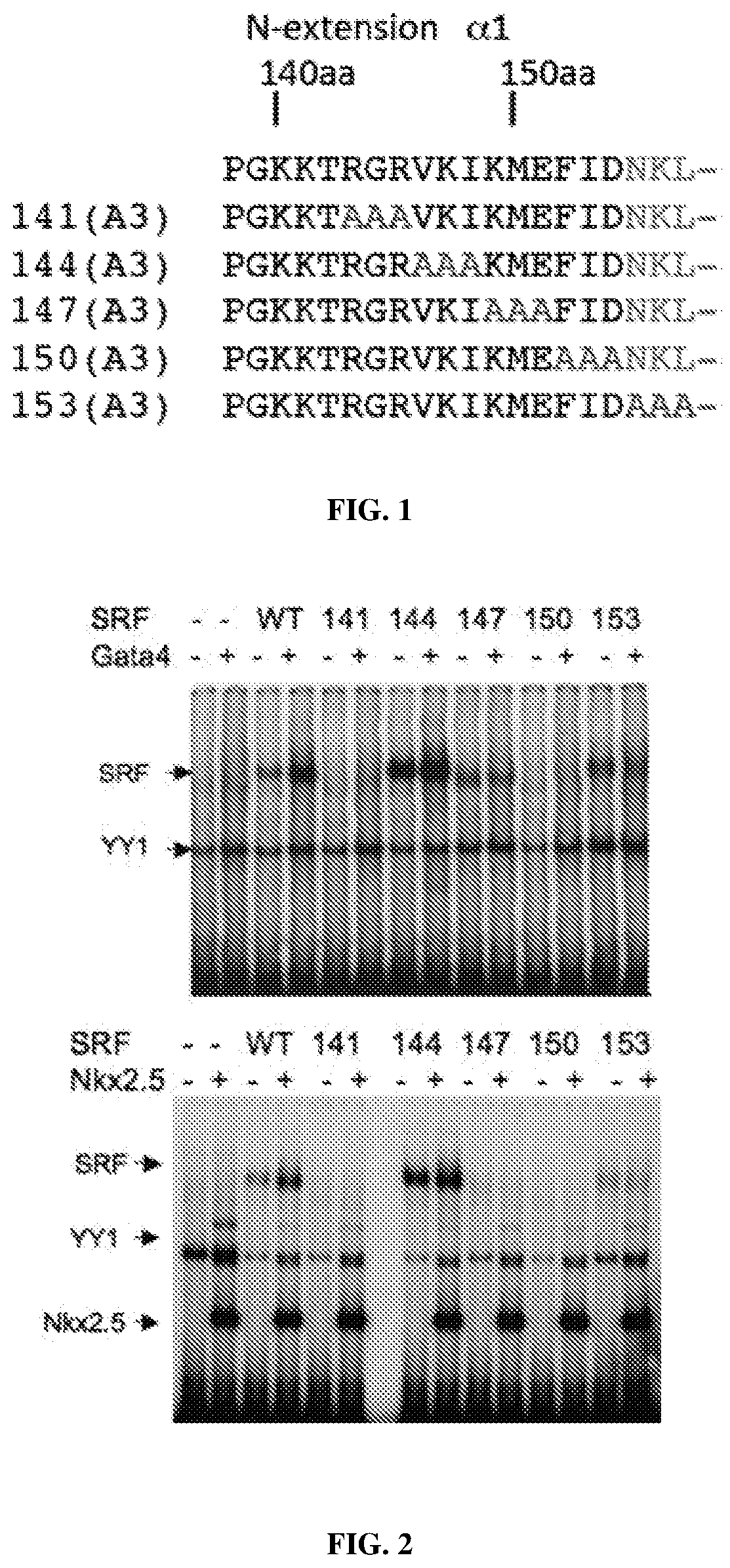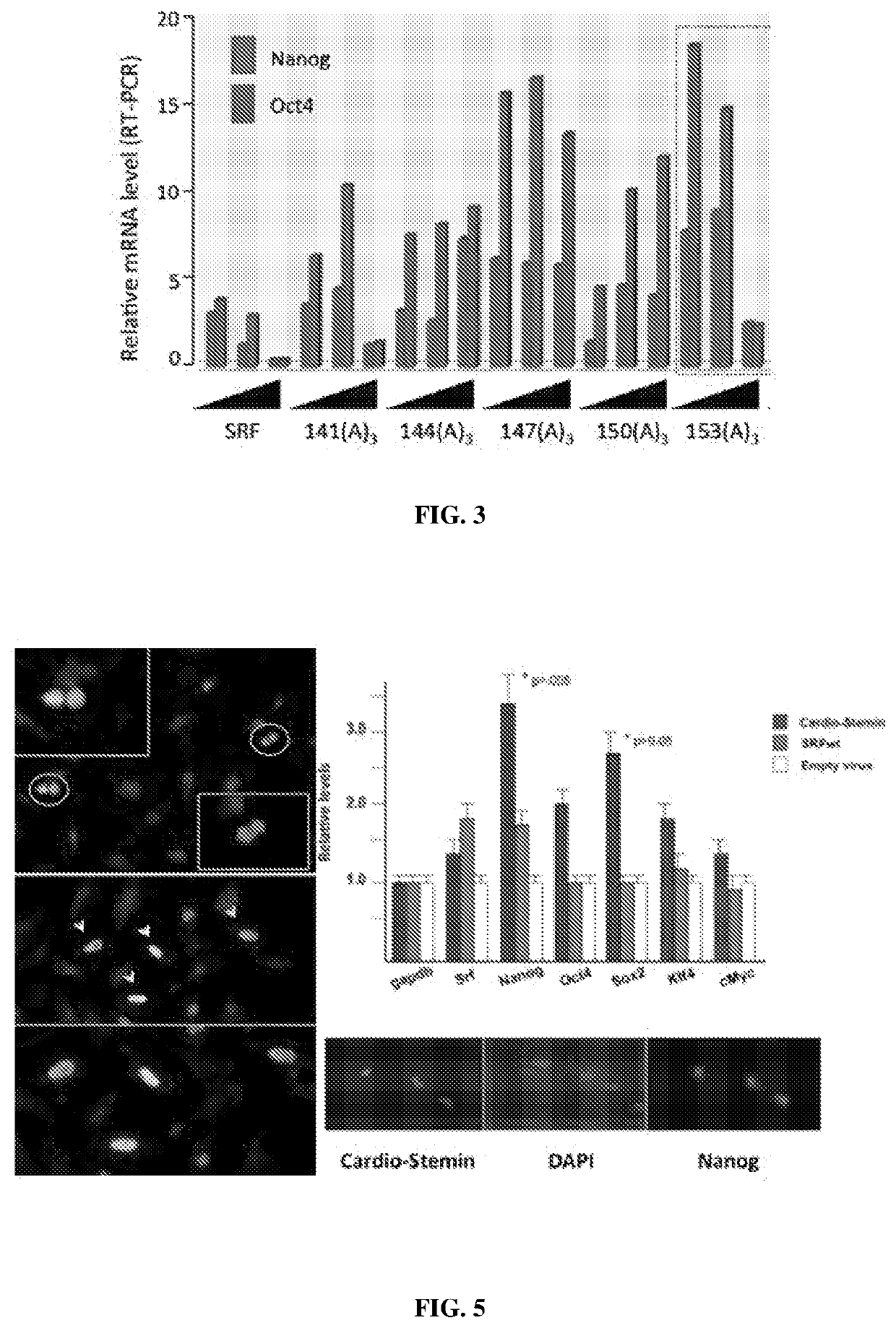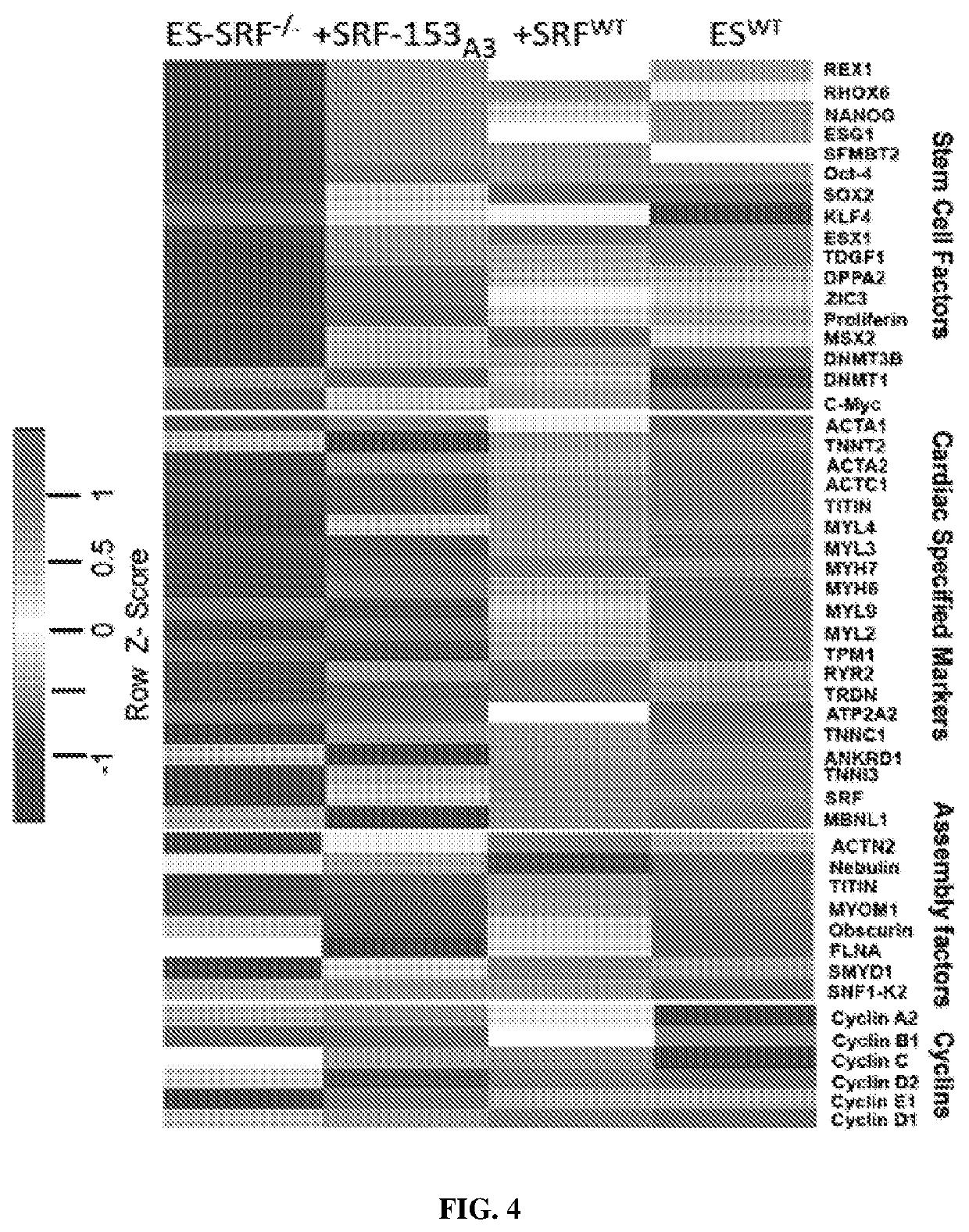Serum response factor regenerates senescent cells
a senescent cell and response factor technology, applied in the field of cardiac disease, developmental biology and molecular biology, can solve the problems of limiting the widespread use of myocardial damage, affecting the survival rate of subjects, and the normal repair process is inadequate to deal with extensive myocardial damage, etc., to achieve the effect of decreasing morbidity and decreasing mortality of subjects
- Summary
- Abstract
- Description
- Claims
- Application Information
AI Technical Summary
Benefits of technology
Problems solved by technology
Method used
Image
Examples
example 1
[0206]The inventors generated alanine scanning mutations across the MADS box that interact with a variety of co-accessory factors. The in vivo relevance of these sites and other conserved residues thought to be involved in SRF dependent, tissue-specific co-accessory factor interactions. They used site-directed PCR mutagenesis to create amino acid mutations at specified residues across the SRF core domain. Residues were changed to alanines (giving a neutral charge and removing potential interacting side chains). Single alanine mutations will alter many predicted DNA contact sites, and mutants that did not alter DNA binding were further evaluated. The inventors constructed five mutations of SRF with triple alanine substitutions, as shown in FIG. 1; such as SRF-141(A3), SRF-144(A3), SRF-147(A3), SRF-150(A3) and SRF-153(A3) in the N-terminal extension and part of the alpha1 coil of the MADS box, to disrupt SRF docking sites for Nkx2-5 and GATA-4.
[0207]Human SRF cDNA and mutants with N t...
PUM
| Property | Measurement | Unit |
|---|---|---|
| total volume | aaaaa | aaaaa |
| diameter | aaaaa | aaaaa |
| diameter | aaaaa | aaaaa |
Abstract
Description
Claims
Application Information
 Login to View More
Login to View More - R&D
- Intellectual Property
- Life Sciences
- Materials
- Tech Scout
- Unparalleled Data Quality
- Higher Quality Content
- 60% Fewer Hallucinations
Browse by: Latest US Patents, China's latest patents, Technical Efficacy Thesaurus, Application Domain, Technology Topic, Popular Technical Reports.
© 2025 PatSnap. All rights reserved.Legal|Privacy policy|Modern Slavery Act Transparency Statement|Sitemap|About US| Contact US: help@patsnap.com



